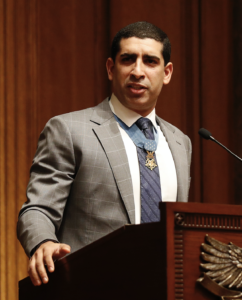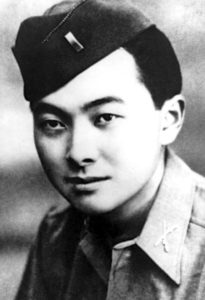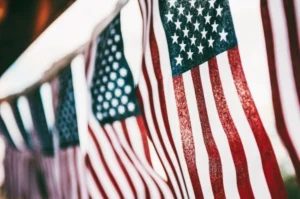Normandy Campaign – Omaha Beach Landing
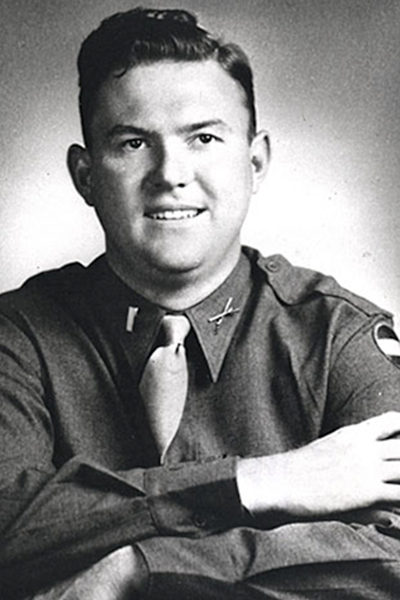
With its beach strewn with mines and landing obstacles and its steep cliffs studded with strongpoints (or Wiederstandnest) made up of stout pillboxes surrounded by barbed wire and filled with machine guns, artillery, and flamethrowers, the June 6, 1944, landing at Omaha Beach was expected to be exceptionally difficult. Despite that fearful estimate, the consequences for the first wave of American troops at Omaha Beach proved worse than anything imagined.
The preparatory naval gunfire and aerial bombardment failed to neutralize the German defenses at the beach and the landing craft filled with wet and nauseous soldiers failed to land in the right locations. Of the 36 amphibious tanks from the 741st Tank Battalion sent out to support the assault by the 16th Infantry Regiment, only 5 actually made it to the beach. Most of those from the eight assault companies – roughly 1,450 soldiers from the 1st and 29th Infantry divisions – were met with a furious hail of machine gun bullets and artillery fire. As the terrible toll mounted heroic leadership was required.
The way forward for the Americans clinging to the beaches was up through the narrow, heavily defended exits. One such path, not far from the Fox Red landing zone, passed by one of the sternest of the German defensive points – WN60. Getting beyond it was critical to moving south and deeper into Normandy.
Jimmie Monteith: Fighting Past Omaha Beach
Jimmie Monteith had dropped out of Virginia Tech after two years there. After leaving he was drafted in 1941 and earned a commission as an infantry officer in 1942. Then, in 1944, 1st Lieutenant Jimmie Monteith and his men from L Company of the 16th Infantry Regiment, 1st Infantry Division, were supposed to land with its right flank next to the left shoulder of F Company. However, it landed five hundred yards to the left of its targeted landing zone. Company L had taken casualties on the way to the beach and upon landing and had been reduced to 125 men. Even with being in the wrong place and under fire, it was one of only eight companies in the initial assault wave that was operational as a unit. Under Monteith’s leadership, the company crossed the beach to the bottom of the nearby cliffs.
Despite the incessant fire, Monteith returned to the beach to locate two surviving American Sherman DD tanks. On foot, he then led the two tanks through a German minefield and into a firing position where they could destroy a pillbox and 2 machine gun nests that were holding up the American advance. With those strongpoints now neutralized, Monteith was now able to lead a flanking assault on the German strongpoint. The fight to outflank the formidable position lasted an hour, and at the end of it Monteith and his men were on top of the hill past WN60. By 9AM the position had fallen and the surviving Germans that had manned it surrendered following an assault by other elements of L Company. With Monteith and his men in the lead, Allied troops began to move to seize inland objectives.
Now off the beach and past the German strongpoint, Monteith and his men would confront a new and deadly challenge. Seeking to drive back the tentative American advance, German soldiers counterattacked a few hours later. Monteith, ignoring his own safety, repeatedly moved amongst his men, directing their actions. The German counterattacks eventually managed to cut off and surround the American unit. Monteith, using a variety of grenades, knocked out two German machine guns that were seeking to annihilate his company. When fire opened up on another flank Monteith immediately moved once more across an open field to help his men fight off the new threat. Reportedly, some of his last words were about concern for his men’s well-being before he went to confront the new German attack. But this time, the lieutenant’s luck would run out as he was struck and killed by German machine gun bullets coming from their rear
Jimmie Monteith would become one of the more than 2,400 soldiers killed or wounded at Omaha Beach on D-Day. And on March 29, 1945, Monteith would become one of three U.S. soldiers at Omaha Beach awarded the Medal of Honor.
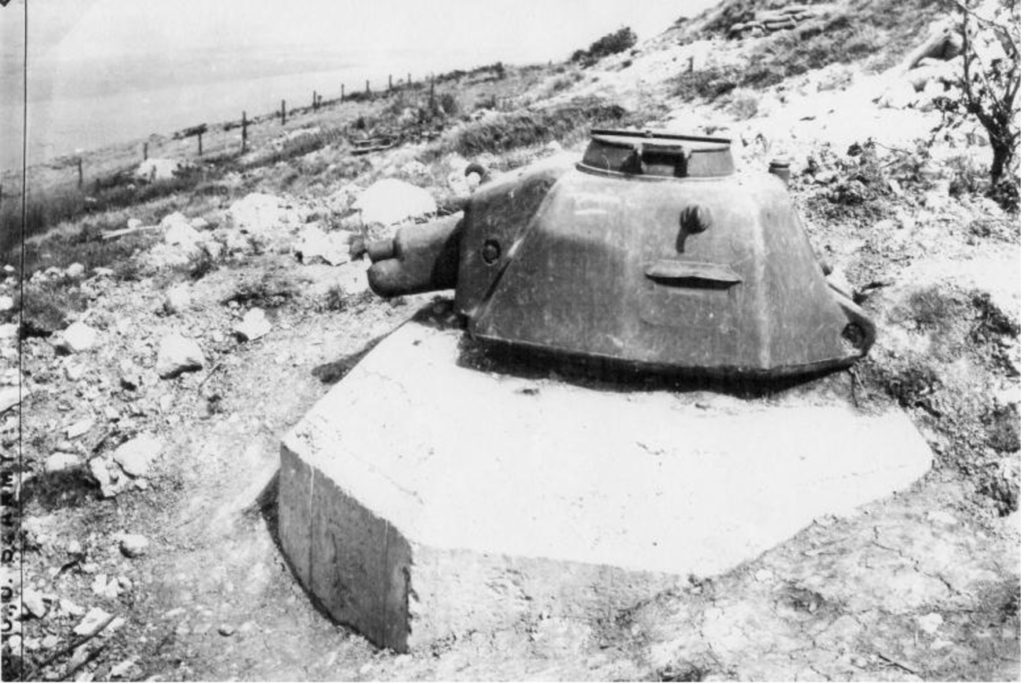
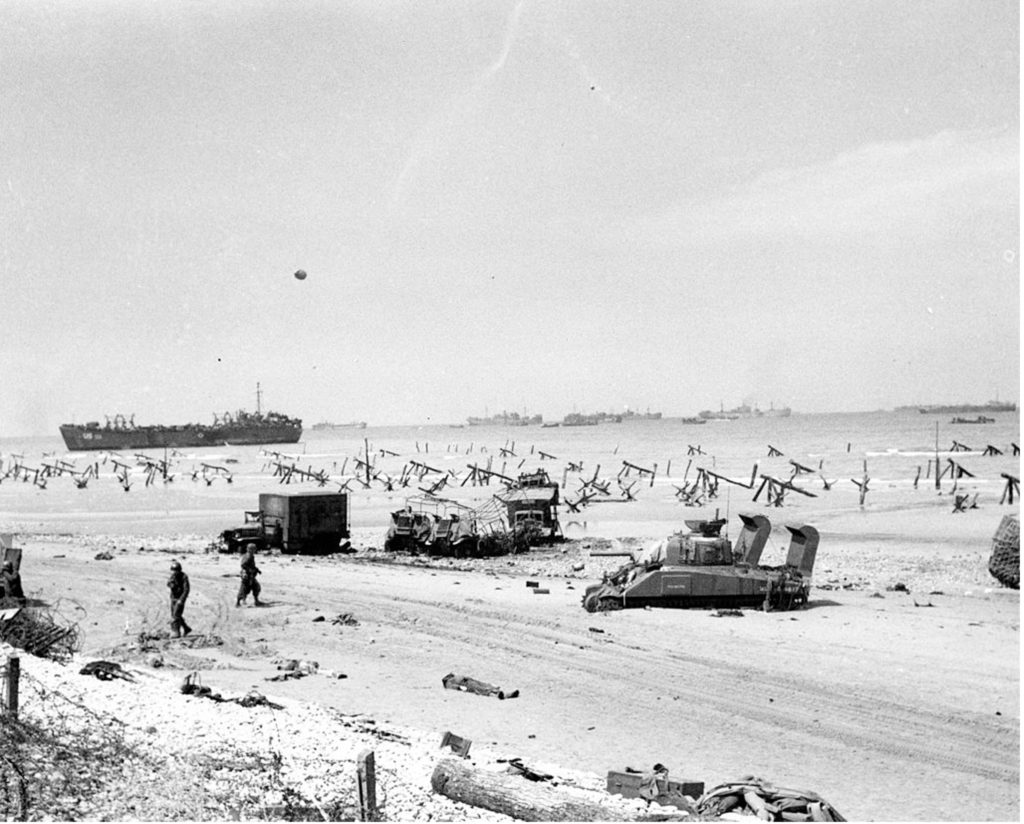
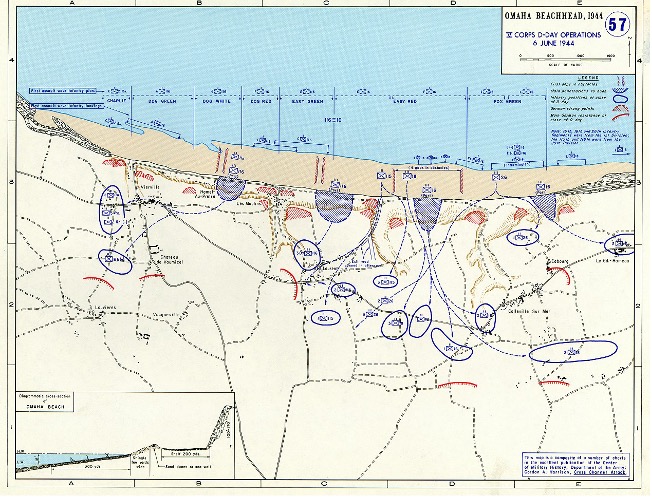
Medal of Honor Citation
For conspicuous gallantry and intrepidity above and beyond the call of duty on 6 June 1944, near Colleville-sur-Mer, France. 1st Lt. Monteith landed with the initial assault waves on the coast of France under heavy enemy fire. Without regard to his own personal safety, he continually moved up and down the beach reorganizing men for further assault. He then led the assault over a narrow protective ledge and across the flat, exposed terrain to the comparative safety of a cliff. Retracing his steps across the field to the beach, he moved over to where 2 tanks were buttoned up and blind under violent enemy artillery and machinegun fire. Completely exposed to the intense fire, 1st Lt. Monteith led the tanks on foot through a minefield and into firing positions. Under his direction, several enemy positions were destroyed. He then rejoined his company and under his leadership, his men captured an advantageous position on the hill. Supervising the defense of his newly won position against repeated vicious counterattacks, he continued to ignore his own personal safety, repeatedly crossing the 200 or 300 yards of open terrain under heavy fire to strengthen links in his defensive chain. When the enemy succeeded in completely surrounding 1st Lt. Monteith and his unit and while leading the fight out of the situation, 1st Lt. Monteith was killed by enemy fire. The courage, gallantry, and intrepid leadership displayed by 1st Lt. Monteith is worthy of emulation.
